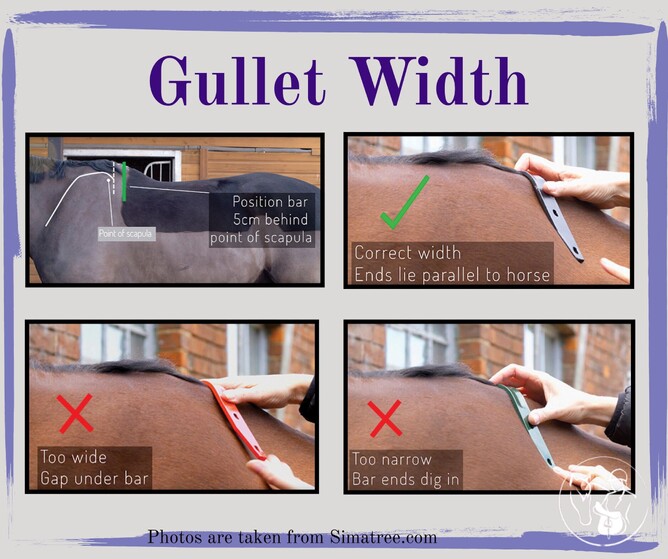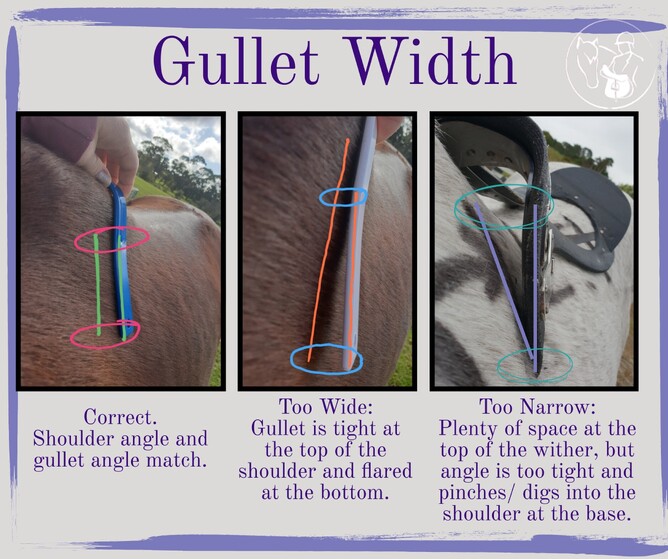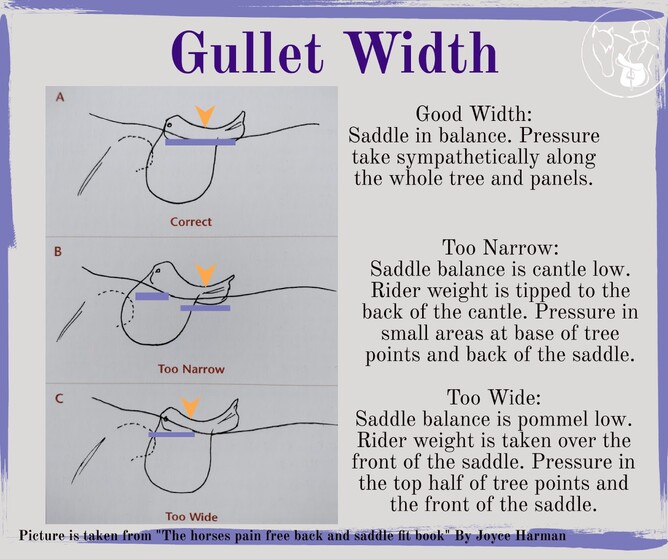Traditionally Gullets were always a fixed part of the saddle, but with modernisation, or innovation, we frequently have the ability to adjust our gullets ourselves as our horses change shape.
So what is the purpose of the gullet?
This is the part of the saddle designed to match the angle of the shoulder and create clearance over the top of, and sides of the spinal processes (withers and spine) and modern saddles often create space for the trapezius muscle. It is made of rigid steel and not designed to give, and is what reinforces the wooden or plastic arches in the tree.
Is this the only part of the saddle that creates balance?
No. But it is the part that provides comfort to the horse, and should be used as the starting point for creating balance in the seat. From here we work on centering the riders position on the horse and keeping suitable clearance with our panel shape and fills.
Why are the gullet bars on the horses back in the first picture?
Because this is how we check with interchangeable gullet plates, what width is correct. you SHOULD be seeing your gullet plate being checked on your horse to make sure the width is correct. Remember this angle doesn't change once it's in the tree, but the tree does lift it up and off the horses wither.
Are interchangeable gullets better than fixed ones?
A gullet is only one part of the fit of a saddle. If the saddle fits then having a, interchangeable gullet is great, but saddle fit is much more technical than just changing the saddle from a Medium Wide to a Wide, and we have much less diversity in the shape of our adjustable trees than the traditional wooden tree's.
What if I have a saddle without an interchangeable gullet?
No problems, as SMS qualified saddle fitters, we are trained to look at that angle inside your saddle and see how it matches you horse's shoulder angle.
I hear people talk about saddle gullets "pinching" shoulders, what does this mean?
This is a good question, it always refers to the gullet width being wrong, but it varies as to whether it means the gullet is too wide (Pinching at the top of the wither) or too narrow and pinching the shoulder. If you look at picture 3 you can see how both the gullet being too wide, and too narrow will cause discomfort.
With the rest of the saddle being a good choice...
A good gullet width - This allows the saddle to sit in balance, taking the rider weight as evenly distributed as possible through the whole tree, front to back. This creates the best way to spread pressure over a big surface area to keep our saddle fit comfortable.
A narrower gullet width than your horses shoulder angle - This creates a high pommel/ low cantle balance. The weight is concentrated at the base of the tree points, and the riders balance point is tipped to the back of the seat, often creating the 'chair seat" (*there are other reasons for this too). We see a bridge in the middle of the saddle where no contact is made, so our pressure bearing surface area is greatly reduced, making the points of contact high pressure and uncomfortable to painful. Our rider usually gets left behind the movement creating a much heavier seat on the horses back, and they tend to "thump" instead of "touch" down on the horses back.
A wider gullet than the angle of the horses shoulder - This creates a low pommel/ high cantle balance. The weight is now concentrated over the front half or less of the saddle, and is often seen with a 'floating panel" at the back. The rider is stuck over the front of the saddle, and may feel tipped forward, and that there is no saddle in front of them, but plenty behind. Many riders often feel they are having their bums 'slapped' when riding. The horse takes concentrated pressure through the top half of the gullet bar and sometimes through the stirrup bars- at worse with an overly wide saddle we can have the tree making contact on the wither.
Is one pressure better than the other?
Yes. The correct one.
Neither too wide or too narrow does the horse ANY favours. The only difference is that with a saddle that is only a size too wide, we can use a pad to help support the balance and spread the weight kindly in many situations. Saddles that are too narrow can't be balanced with a pad to make the fit work (think thick socks in shoes a size too small).
This is just a brief overview of gullets and how they contribute to the fit of a saddle, but hopefully it provides some insight into why we saddle fitters like your horses to maintain a constant shape year around.







